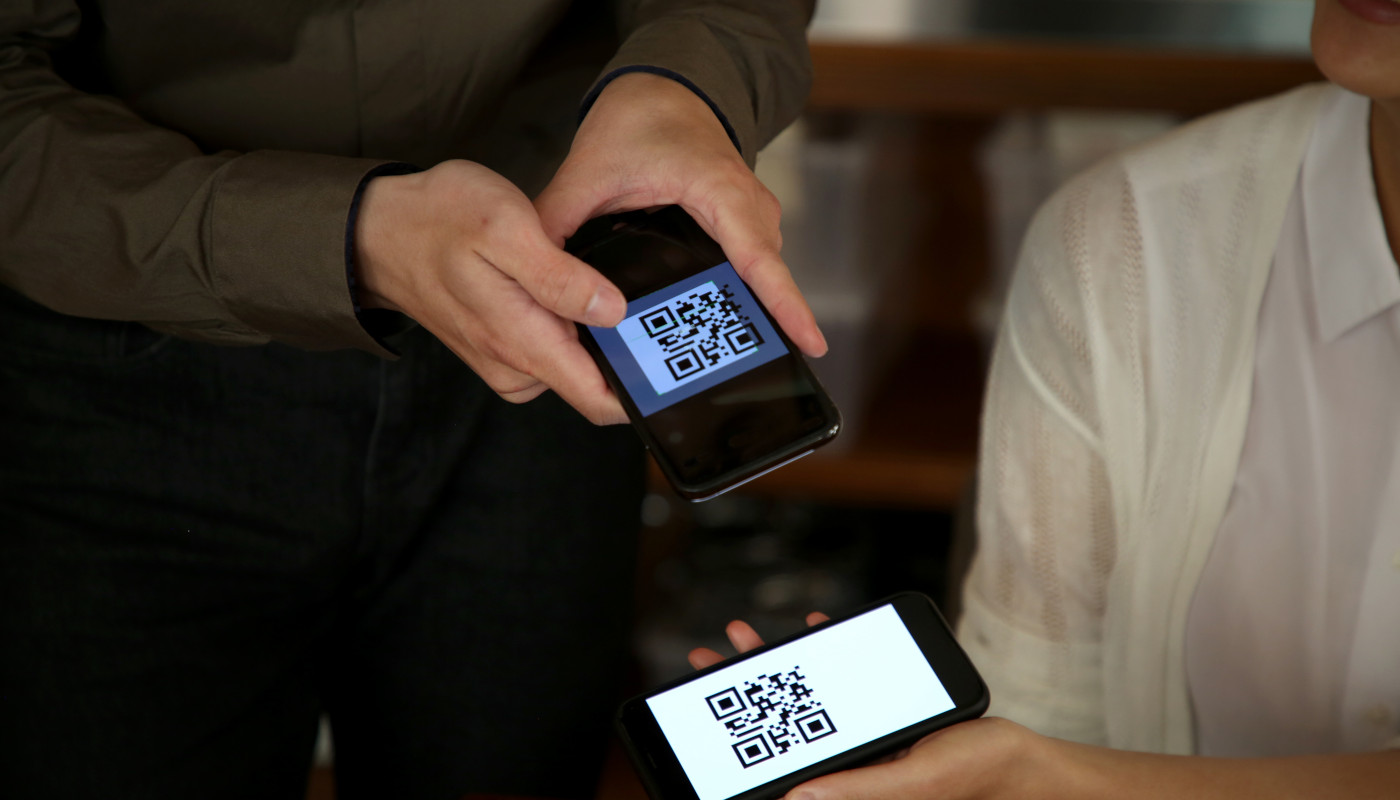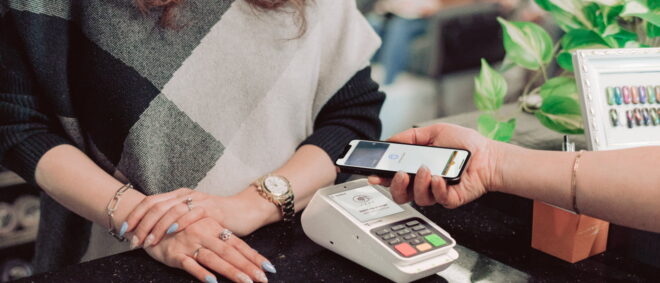This transition wasn’t immediate, since specialized equipment was previously needed to read QR codes. For the average business owner, the upfront scanner cost was difficult to justify; but modern mobile technology now comes with built-in QR code-scanning capabilities. In the midst of a pandemic, businesses of all types are now turning to QR codes to facilitate contactless ordering and contactless payments.
The many benefits of QR code technology
The fact that QR codes can store so much information makes using them more beneficial than traditional barcodes. When deployed correctly, QR codes can also deliver crucial advantages to the dining experience.
1. Safety
When visiting your restaurant, customers can scan strategically-placed QR codes to download your entire menu onto their respective smartphones or tablets. They can do this without ever touching communal menus. The same is true when paying for the check, which also involves scanning contactless QR codes. Customers never need to share any credit cards or sign any physical receipts.
In addition to reducing transmission risks, contactless payments are more resistant to fraud, since customers hold onto their credit cards or mobile devices throughout the exchange. This helps to reduce theft and abuse.
2. Savings
The self-service model of QR code scanning can help reduce staffing costs, saving your restaurant money. You also save on printing costs by no longer having to publish and update hard copies of menus. This is especially true since:
- Creating static QR codes is free (thanks to online generators)
- Scanner costs are non-existent if you already have a mobile device
Less paper also happens to be better for the environment, allowing you to shrink your establishment’s carbon footprint.
3. Dynamic content
In addition to storing more items, digitizing your menu allows you to feature photos, videos, and other multimedia – not to mention dynamic pricing. This strategy also ensures effective multilingual support, since each customer’s phone will default to the preferred language of the user. This is all in sharp contrast to hardcopy menus that are “locked-in” once they leave the printer.
4. Speed
QR code technology can deliver significant time savings for all parties involved. Customers no longer have to flag waitstaff to ask for menus or put in orders. Employees don’t have to spend as much time updating orders or explaining today’s specials. This speed results in a more enjoyable dining experience for patrons – and more tables served per unit of time for restaurants.
How do QR codes for restaurants work?
As a restaurant owner, you must first set up your payment environment and ordering system for QR code acceptance. Your patrons, however, don’t have to download a dedicated app to use a QR code. Most modern smart devices come with QR code scanner technology (linked via the camera). This allows users to scan and download menus easily by tapping the camera icon on their device. To pay via QR code, customers just need to pre-load debit or credit card information to a mobile wallet (such as Apple Pay) or manually enter an account number and expiration date into a hosted payment form.
Below is a typical breakdown of how QR codes for restaurants work in practice:
1. Ordering via QR code
Once you’ve created QR codes, you’ll need to place them throughout your restaurant – including at the entrance, next to the cashier, and on individual tables. These two-dimensional matrices can store everything a customer needs to know – from today’s specials to holiday greetings to allergy warnings. You can even include interactive videos depicting food prep or ingredient selection. The possibilities are endless.
When a customer is ready to order, he or she can relay this information to a staff member or simply push his or her order straight to the kitchen via mobile device. The latter is technically safer since it minimizes face-to-face contact between waitstaff and customers.
2. Paying by QR code
When the meal is finished, a waiter can then bring the table a unique QR code on a printed receipt or on a smart device screen. The customer can scan this new QR code to download a copy of the itemized bill – complete with prices, taxes, gratuity, and even loyalty points. Thereafter, the customer can open his or her mobile wallet to approve the payment, or manually enter credit card information, an email address, and a mobile number into a checkout form. Both sides of the transaction receive payment confirmation on their respective devices.
Setting up your restaurant for QR code acceptance
As mentioned above, most customers don’t need to install a special app to begin reading QR codes. However, some setup is required on your end. While there are dedicated QR code scanners for sale, you don’t have to invest in any physical hardware if your waitstaff already uses smartphones and tablets. All you need is to configure some back-end software to begin using QR codes in your restaurant.
At Clover, we offer scan to order and scan to pay technologies that integrate seamlessly with our POS payment solutions. Better still, you can expand both platforms with third-party plugins from the Clover App Market – whether you want to design better table layouts, manage employee scheduling, or launch loyalty programs.
To learn more about how our contactless ordering and payment technologies can help your business thrive amid a pandemic, schedule a free consultation with our merchant services team today.
* “History of QR Code,” QRcode.com






